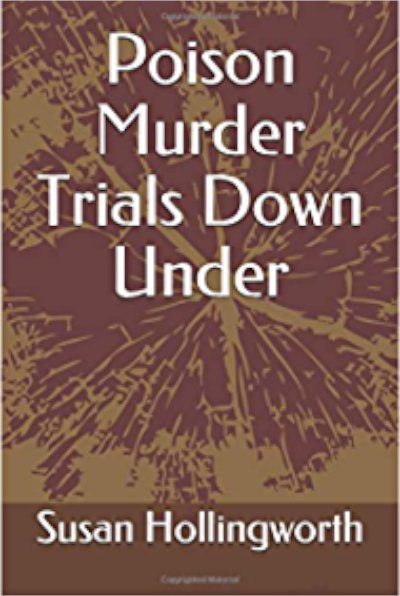Poison Murder Trials Down Under by Susan Hollingworth, Australia, 2019
Well researched, Poison Murder Trials Down Under is a resource for anyone wanting to know more about poison crime in Australia (1844 – 1953). The book may also be helpful for people trying to track down information about their forebears; although, of course, one can only hope that these family-tree researchers do not discover an unexpected poisoner somewhere in their background. Given the unbelievable number of such crimes it is, however, a possibility.

Hollingworth has researched 51 cases, each in a separate chapter. There is a description of the crime – the lead-up to it, the crime itself, the trial and, finally, the punishment meted out. As well, there is a wealth of background information regarding the criminal – place of birth, family situation, marriage (or, in many cases, marriages), children, parents, siblings and even grandparents. In most cases, similar family-tree information is given for the spouse who, more often than not, is also the victim. A number of black-and-white photos lend a visual element to the book.

I found that my interest was the actual crime, and the extra information regarding the perpetrator’s grandparents, in-laws, and/or step-siblings, was a cause of some irritation. However, Poison Murder Trials Down Under, is not a novel. Even though it may share certain basic elements with the novel, it is predominantly a factual book for research. It could be a great starting point for someone interested in bringing some of these, often horrendous, stories to life.

As a whole, the book gives a desolate picture of that particular period of Australian history where poverty and isolation obviously played a major part in the creation of a certain type of criminal. What struck me was the number of women who resorted to strychnine or arsenic as a method of disposing of unwanted spouses or family members. One cannot help but wonder if this is still the case, or whether more improved forensic methods have forced criminals to find other, more sophisticated, ways of eliminating their victims.